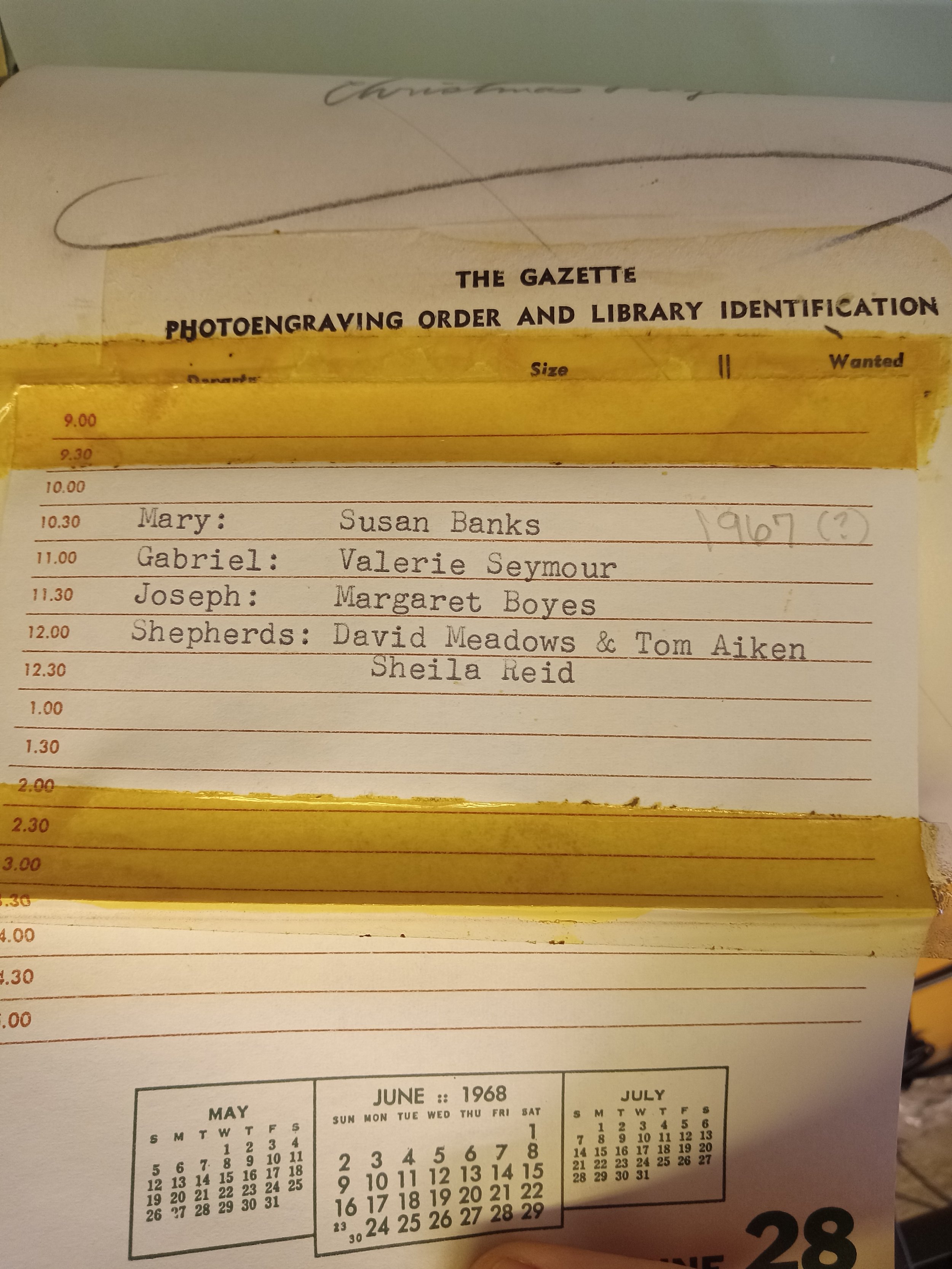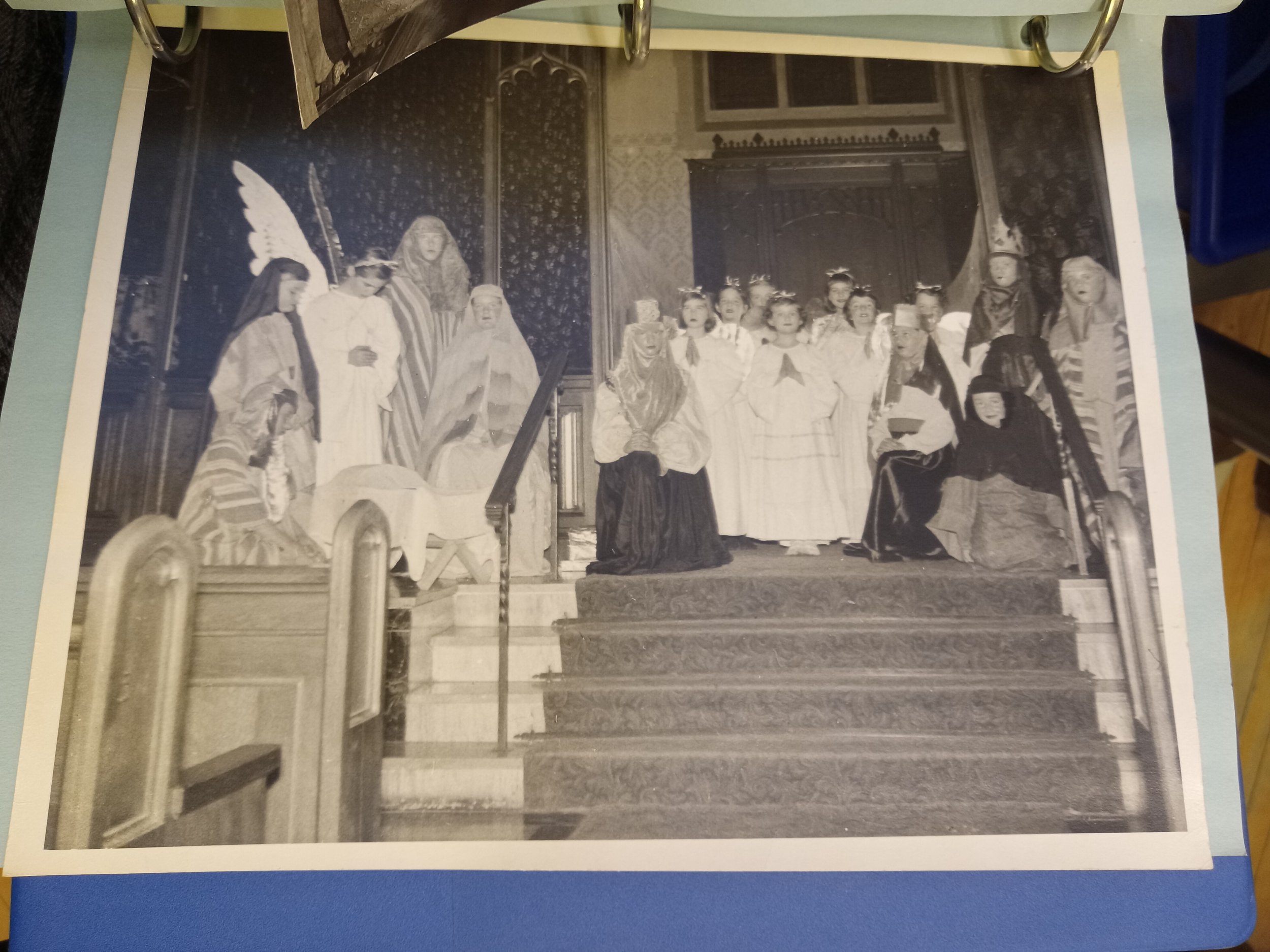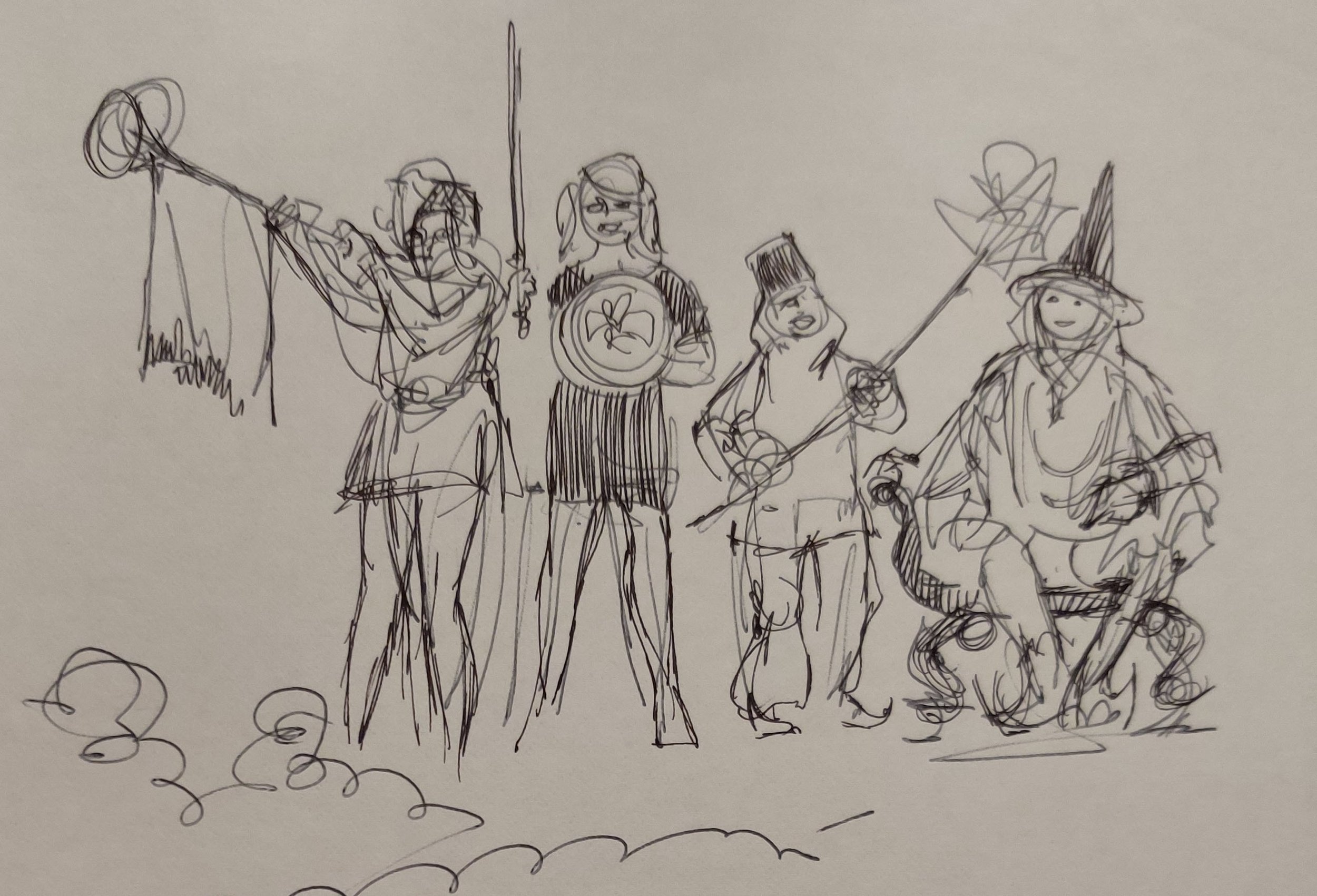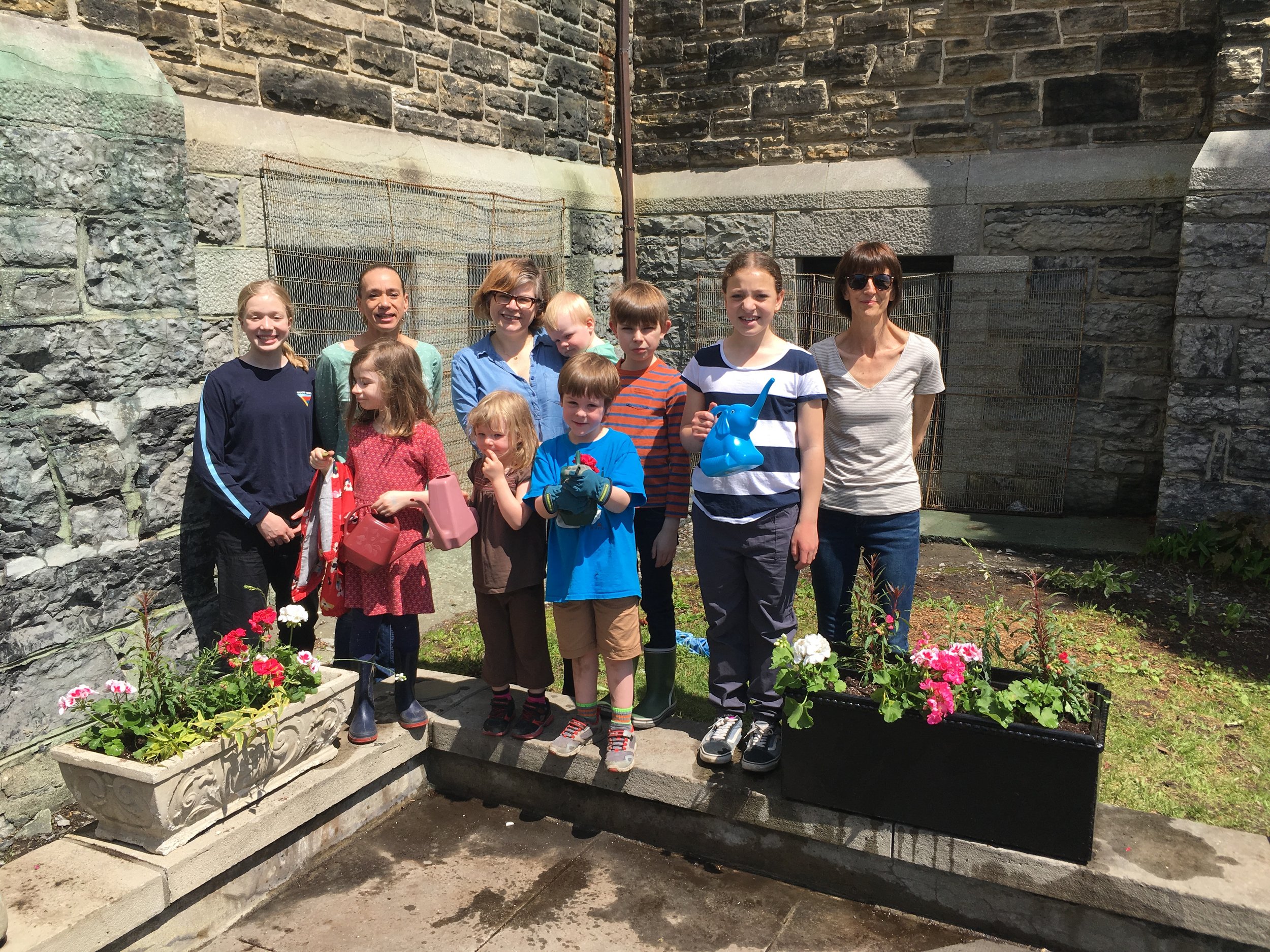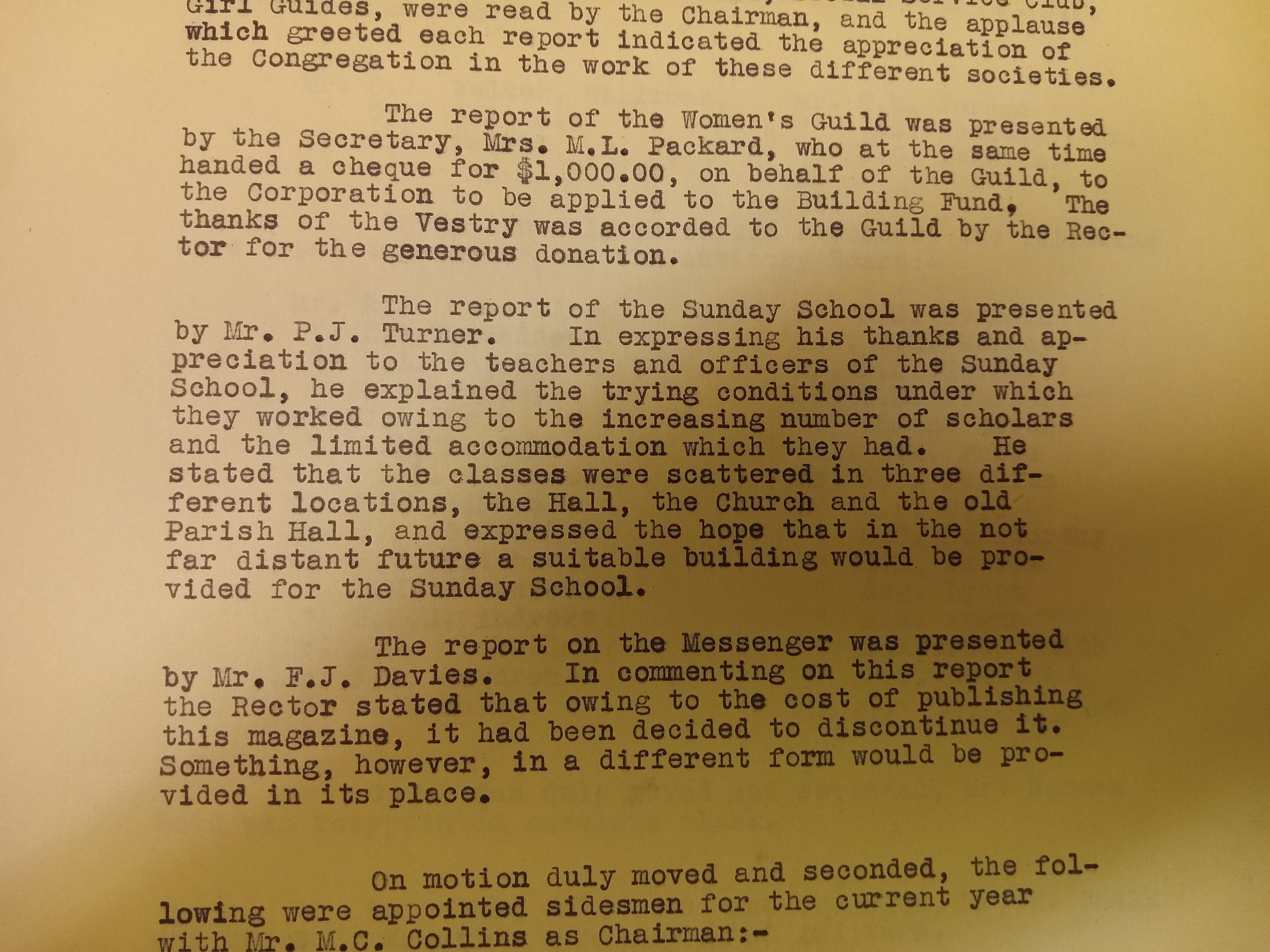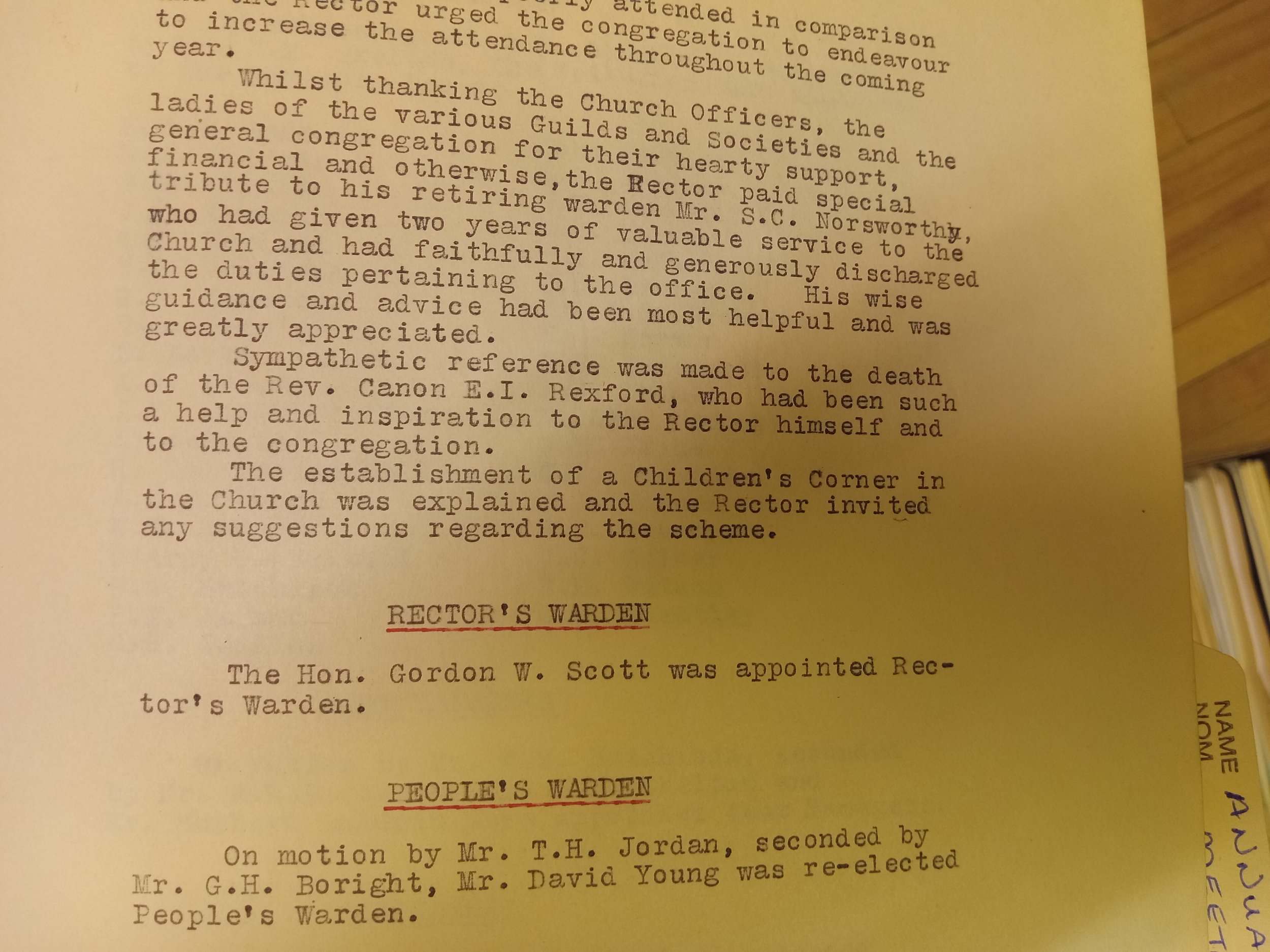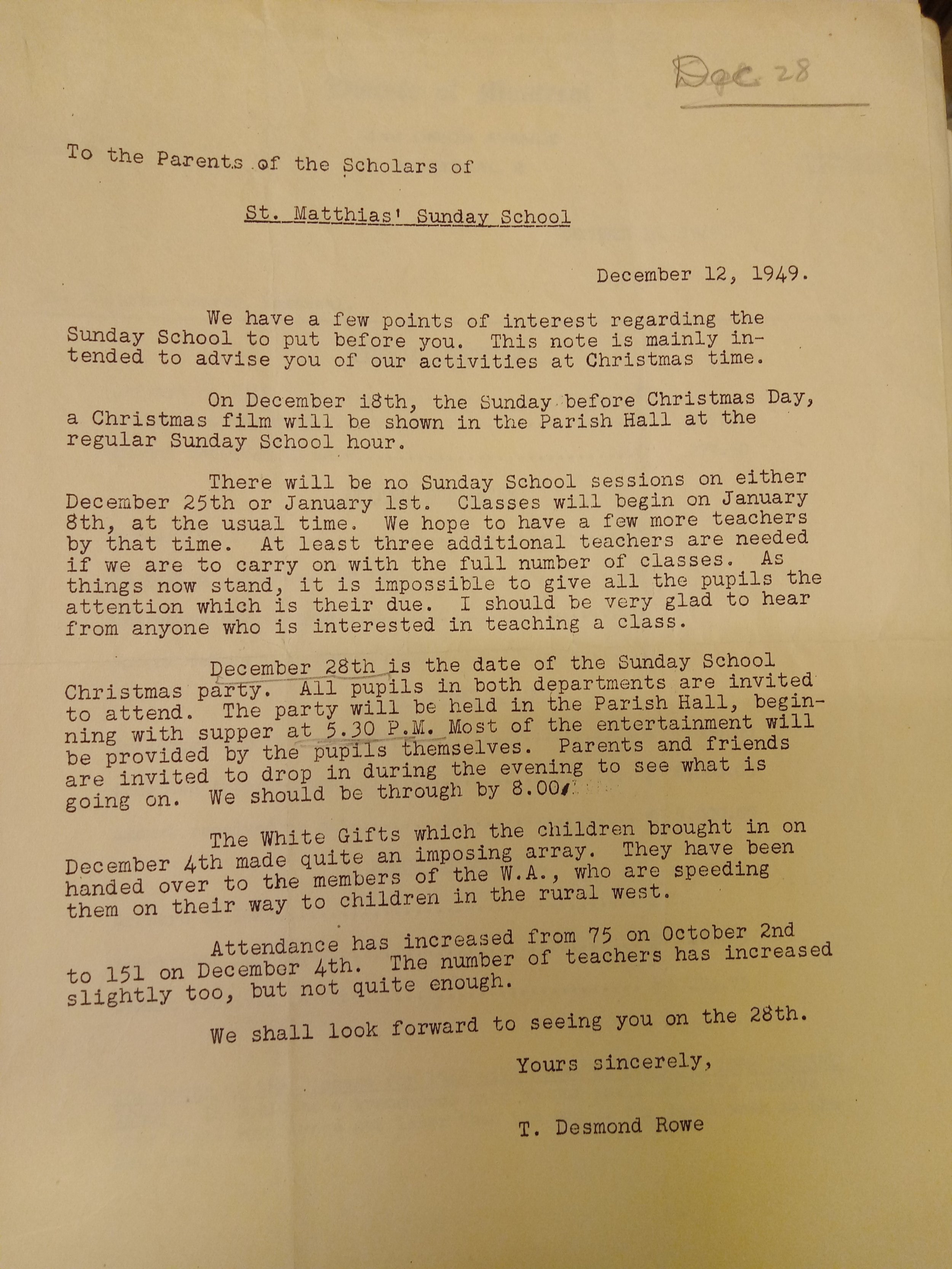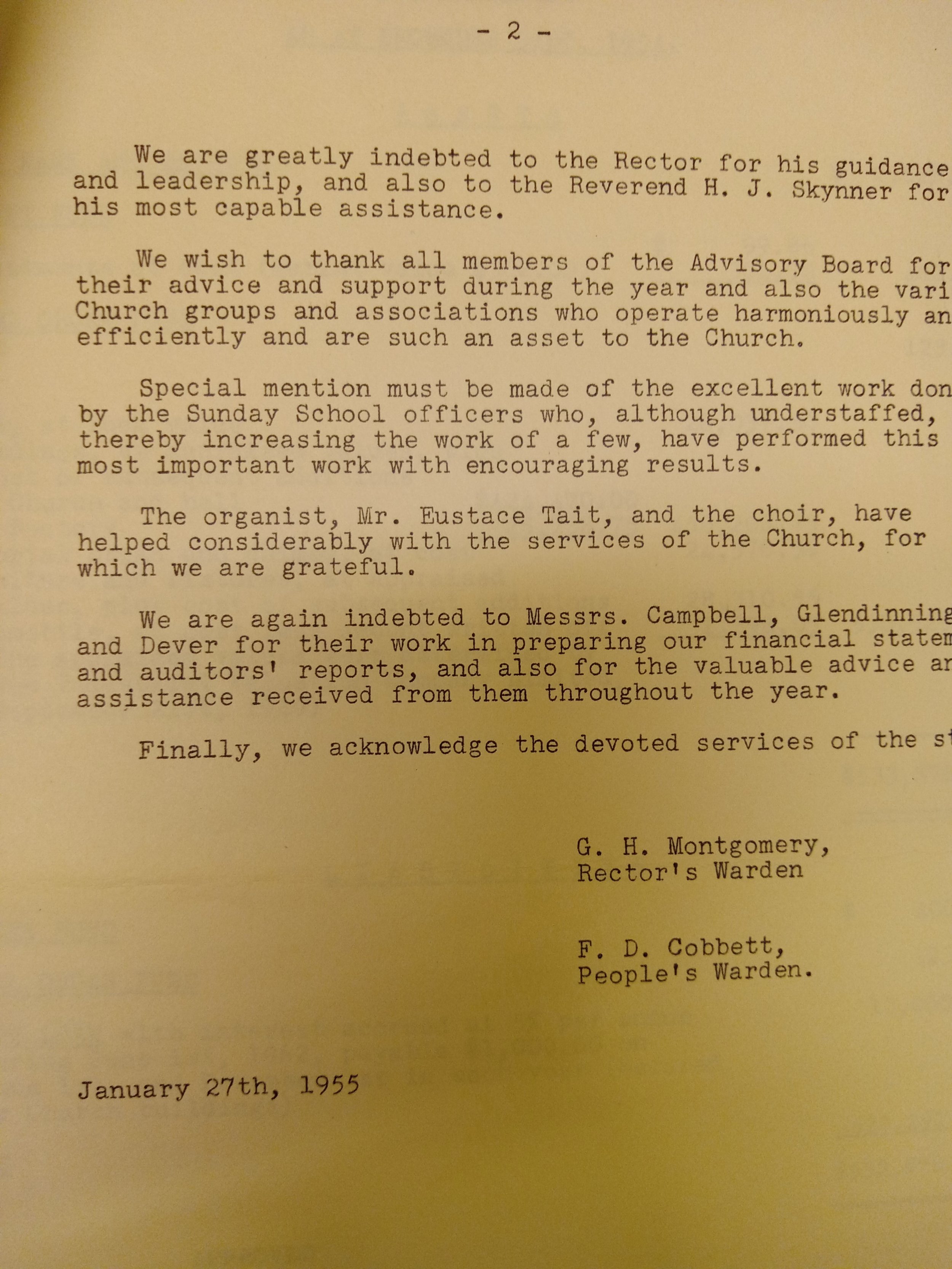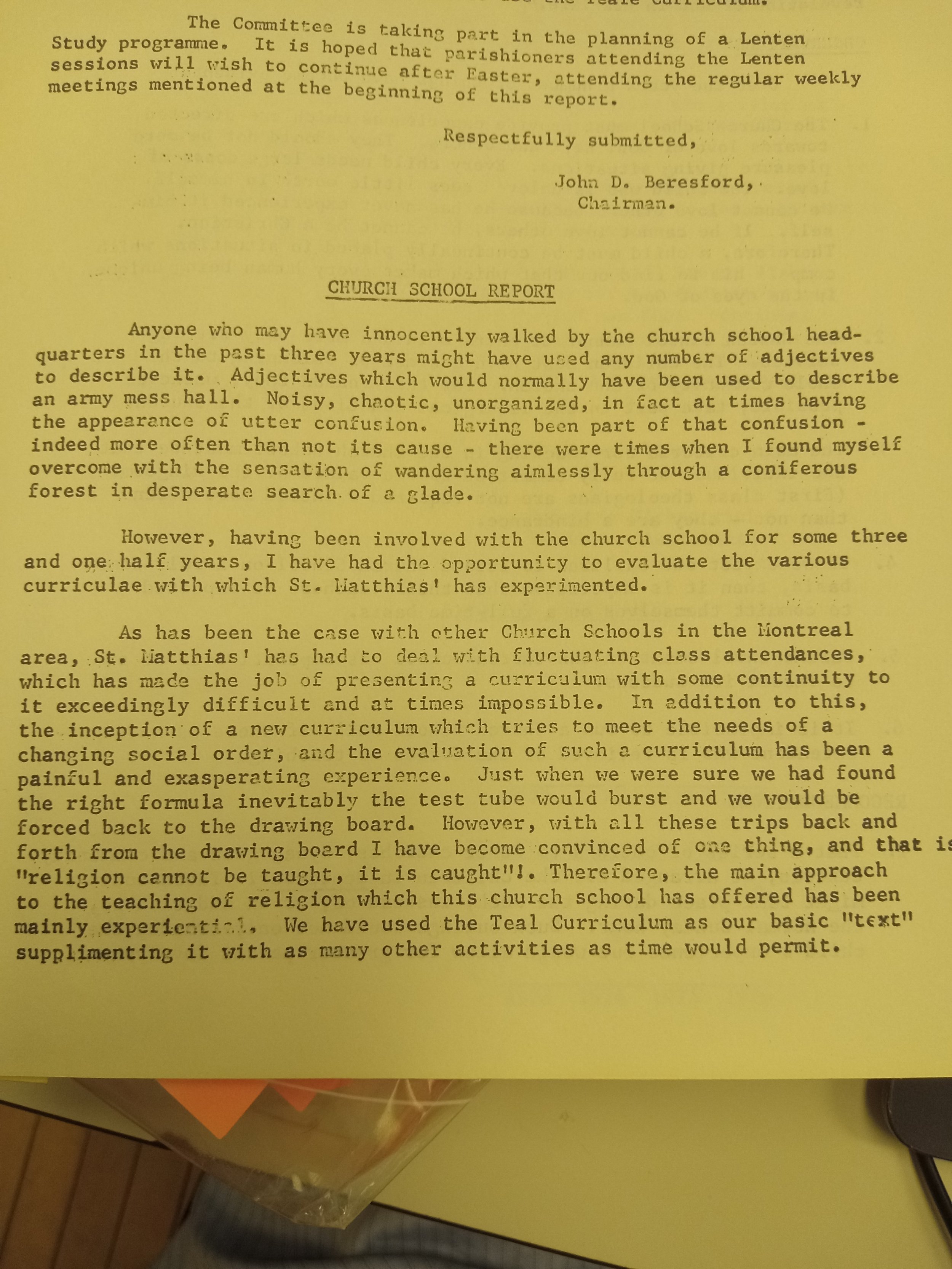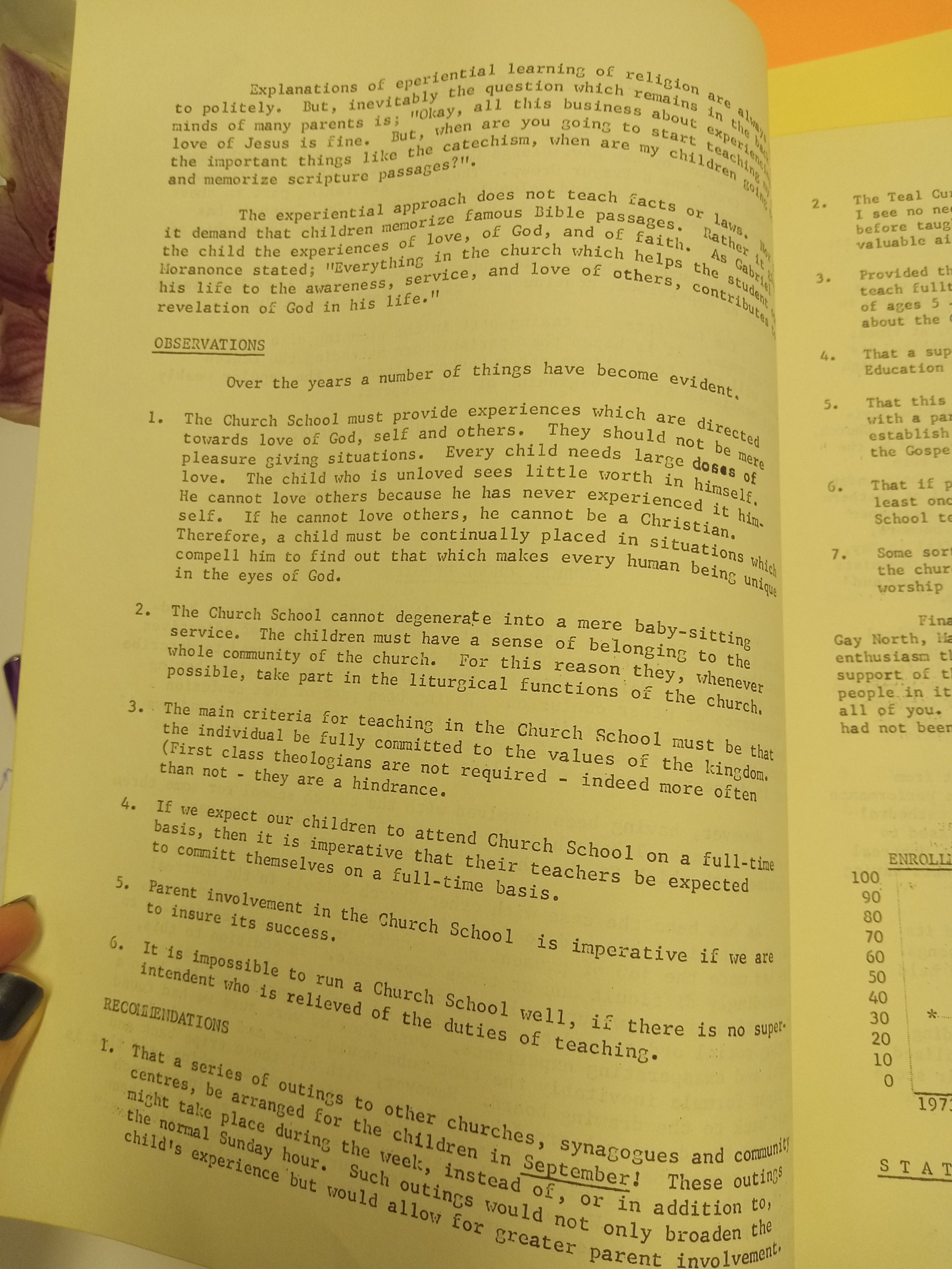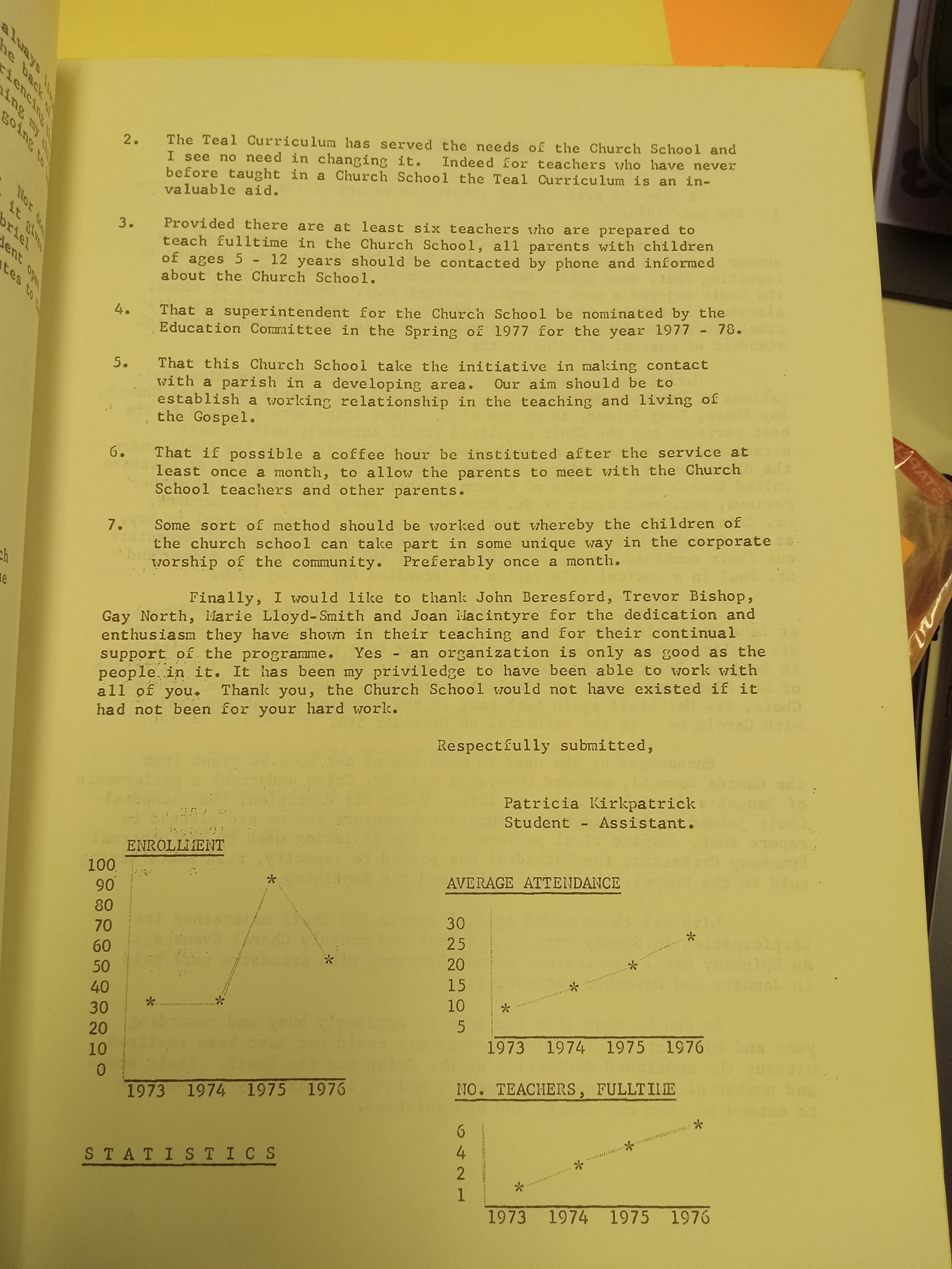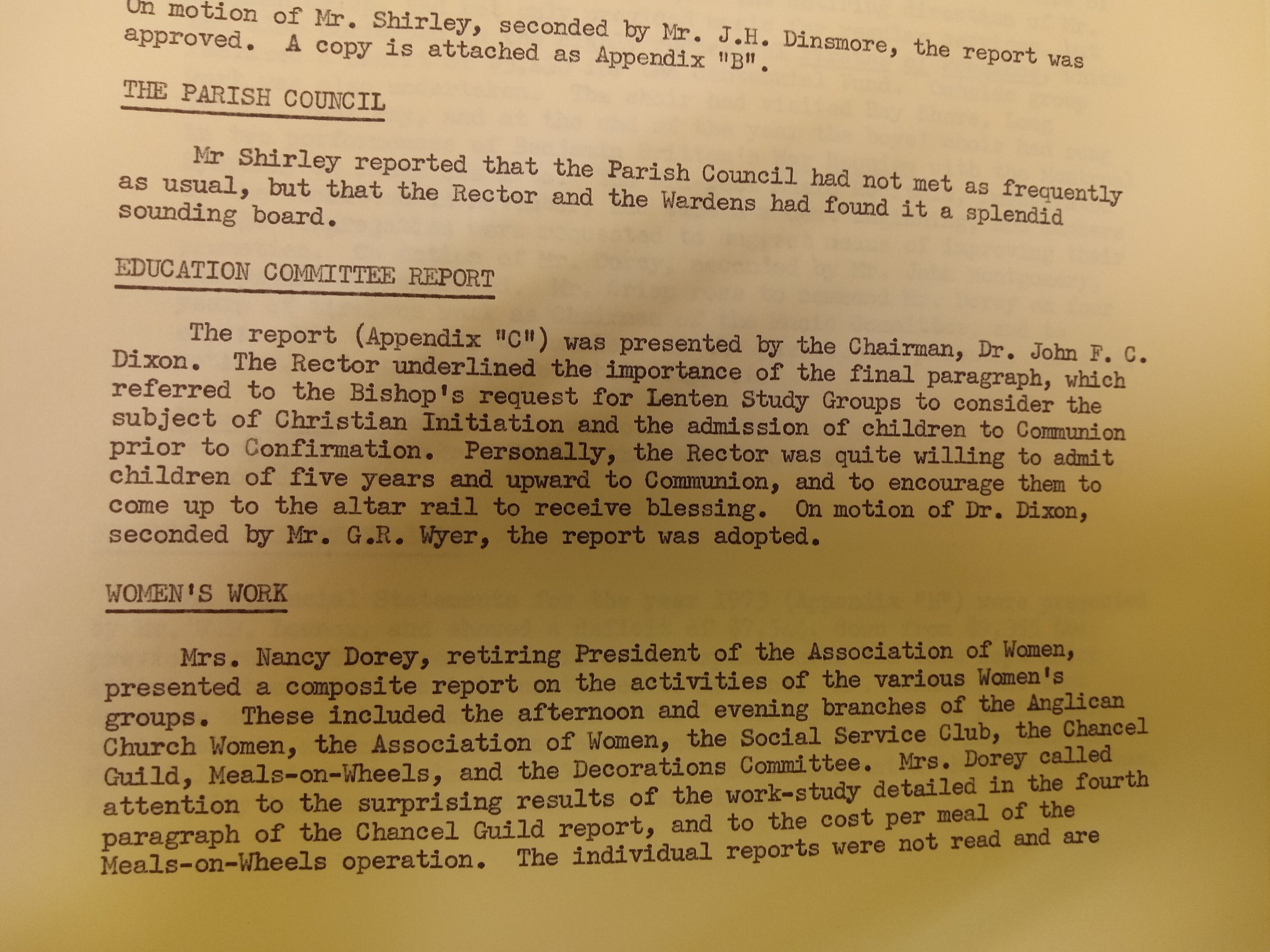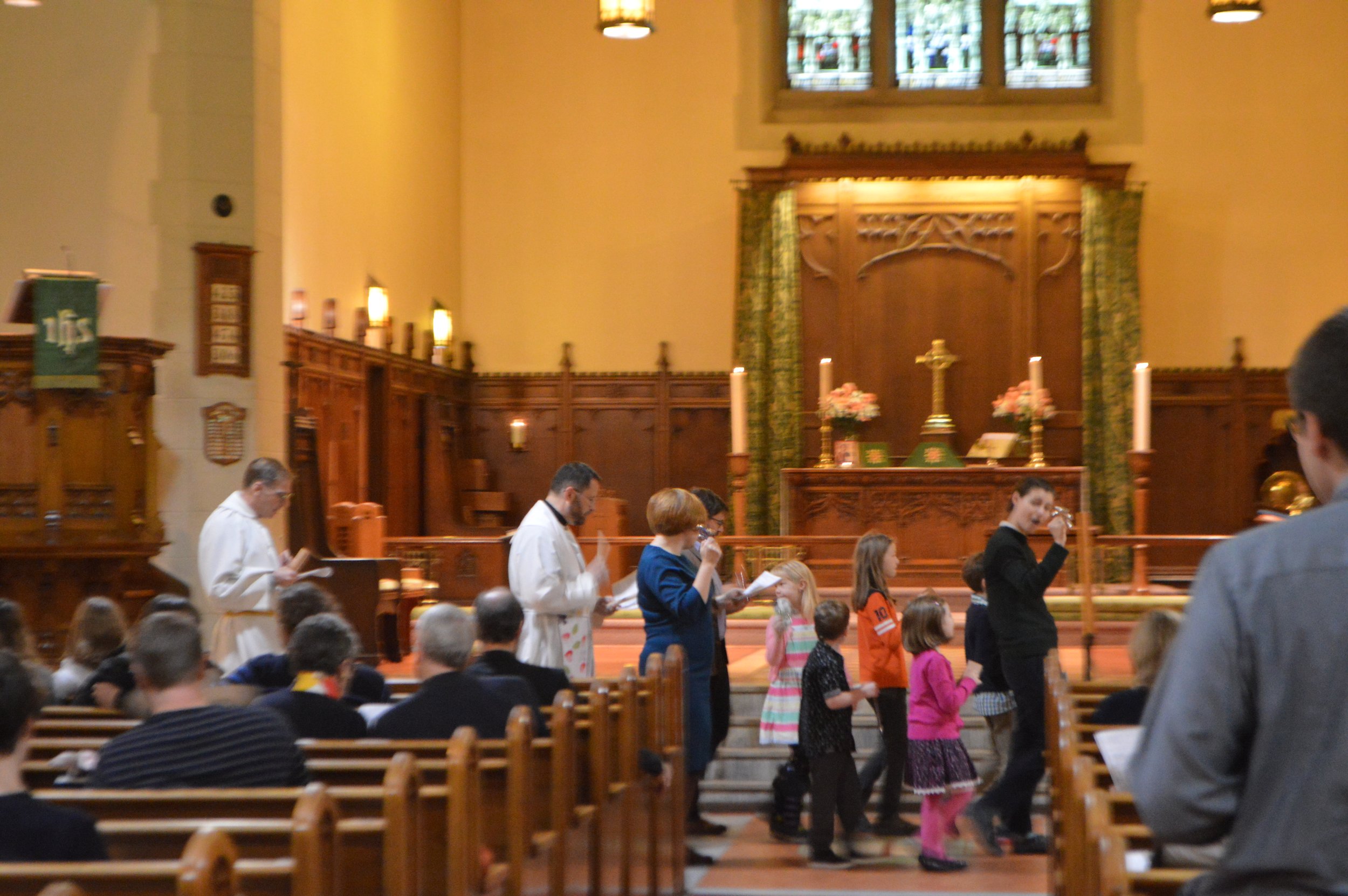December 23rd: The Sunday School
St. Matthias’ was officially founded as a mission of St. George’s, Place du Canada, in 1873, which means our community is 150 this year! For the next 12 months, we’ll be diving into the archives to shine the spotlight on particularly interesting parts of our history.
Although some things in this photo (like blackface) should stay in 1922 when it was taken, the intergenerational community on display is something the St. Matthias’ Sunday School continues to strive for!
The St. Matthias’ Sunday School has been through many changes since 1873, including years of simply not existing. Although it is always tempting to see the Sunday School as a somewhat parallel organisation, a group in some way set apart from the main congregation, its history here does not bear that out.
The Sunday School is, of course, easiest to see at work in the medium of the Christmas pageant. Whether traditionally costumed tableaux, as in 1967, or more contemporarily acted, as in the 2016 pageant in which Mary ad-libbed a blood-curdling yell before appearing onstage with Jesus, guiding the congregation through an experience of the Holy Birth is a longstanding duty. But the St. Matthias’ Sunday School has involved itself in many other parts of the life of the church as well, from gardening every spring with the Grounds & Gardens committee to participating in parish clean-ups. And, beyond these regular involvements, the Sunday School has impacted St. Matthias’ mission budget, building plans, liturgical life, and even consumption of post-service refreshments.
As we have learned, St. Matthias’ has always been a church full of outward-facing generosity, even when belts needed to be tightened for internal expenses. For most of the first fifty years of our life, the Sunday School appears in our archives only as financial statements – but what financial statements they are! This example from 1929 is characteristic of this period of the Sunday School: we see regular collections from members (invested in an account that produced interest!) as well as significant disbursements toward local and international charitable work.
The Sunday School was also a major part of the pressure for the building of the new parish hall in 1935: in 1933, the Superintendent remarked that it was simply untenable to continue having the Sunday School meet in whatever scattering of space was available. By the new Superintendent’s report two years later, the “modern, hygenic, airy and fireproof, designed specifically for Sunday School work” hall was “a great inspiration and encouragement to staff and scholars alike.” The 1930s were also a time when St. Matthias’ was engaged in an ongoing struggle to hire – and retain – an assistant for the rector. This rotating door of curates, which would continue for several decades, would eventually all become Sunday School Superintendents, developing their own burgeoning ministries in the space the Sunday School created. And, as if the building of a hall and the retaining of a dedicated clergyperson weren’t enough for a single decade, 1937 also saw the completion of the Children’s Corner, which we now call the Children’s Chapel, in the South Transept. The Sunday School of today keeps it well-decorated!
The most longstanding truth of the Sunday School, however, is the problem of integration with the larger community. Staffing challenges have historically been a major contributor to this problem; staff has mostly been made up of parents, and there have rarely been enough of them in any case. A letter to parents from 1949 states the problem most plainly of all its mentions in our archives: “it is impossible to give all the pupils the attention which is their due,” both purely on the basis of teacher-student ratios and in the sense that without engagement by other adults in the church, it is difficult to help children believe that they are members of a larger community. Although the current Sunday School does not hold with the sometimes-fashionable idea that children are the “future” of the Church (they are, demonstrably, its present, just as much as members of any other age!), part of their goal is to help our youngest members feel as though St. Matthias’ is a place to which they, too, can come home.
As former Superintendent Rev. Dr. Patricia Kirkpatrick put it in her 1977 report to Vestry, “children must have a sense of belonging to the whole community of the church.” This would not have been a shocking idea; already in 1974, the church had agreed to welcome children as young as five to the communion rail, in response to directives from General Synod around rethinking the connection between communion and baptism. But not-yet-Dr. Kirkpatrick thought that St. Matthias’ could and should go further. Her suggestion that children be involved “in the corporate worship of the community” on a regular basis was taken up partially during the test period of the Book of Alternative Services a few years later, and is manifested today in our quarterly Family Services. But perhaps the most enduring outcome of this particular theological student’s input is our coffee hour. Initially conceived as a space for parents to meet each other, and other members of the congregation, this central part of Matthian community has become part of the work of the Fellowship of St. Matthias’ that brings members of all ages together in a shared love for baked goods and, of course, each other.



